Comics Are For Everyone - Captain America Comics #1-19
/Comics are of course no exception when it comes to depicting stereotypes, dealing with authority and discussing our society. I have a long list of comics that deal with various topics and now is a good as any to start digging through my archives. And when I say “archives”, it sounds like going way back in time, so let’s do that.
It’s 1941. The world is a simpler place. There are good and evil people. The good people are Americans and its allies. The evil people are Nazis and some of the Asians. Who do we need to fight this fight between good and evil? Of course, it’s the perfect time to create Captain America, the personified patriotism. Joe Simon and Jack Kirby (later joined by Stan Lee) started Captain America Comics in 1941 to fight World War II in the “funny pages.” It’s pure propaganda of course and it might be unfair to judge those old comics nowadays. Culture in general was much more open about its racism and stereotypes and it was more accepted. I would argue that as embarrassing as some of these stereotypes are nowadays, at least there was less pretense. Today a lot of it is still there (okay, not as extreme as here), but it often seems like it isn’t. Anyway, let’s take a look at some examples from the old times.
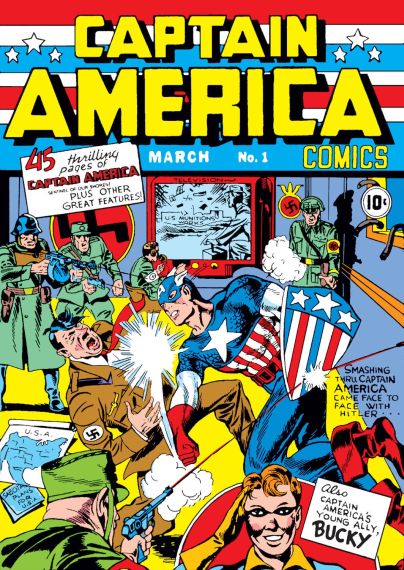
The iconic cover of no.1. Captain America punches out Hitler. What a great propagandist, iconic image. Seeing that, you have to believe that America will win, which was the whole purpose of course.
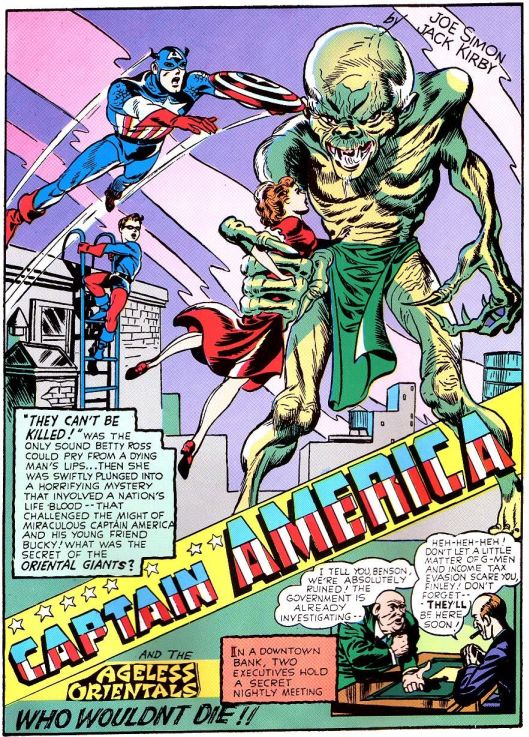
It was also a time where you could still talk about “Orientals”, which fittingly here are just some weird monsters. Orientals as in “people who live in the Orient and therefore are all the same.” This mostly means China or Japan, though.
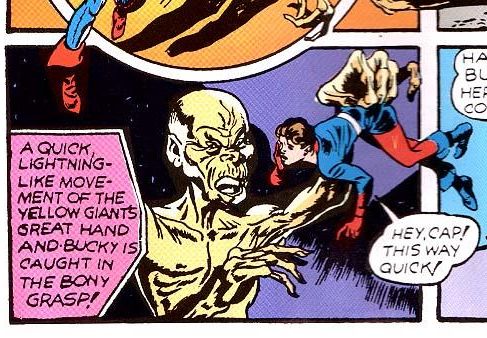
And they all have yellow skin of course.
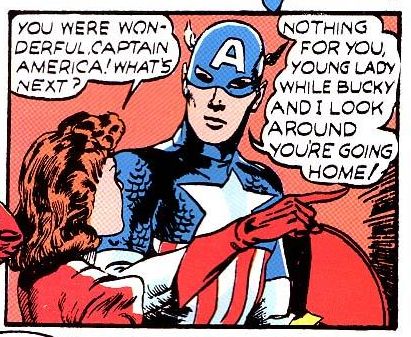
Just in case you were wondering what place women had at the time. Not where the action is of course but you needed someone to adore the men for what they were doing. Again, this isn’t something that has completely changed up to now.
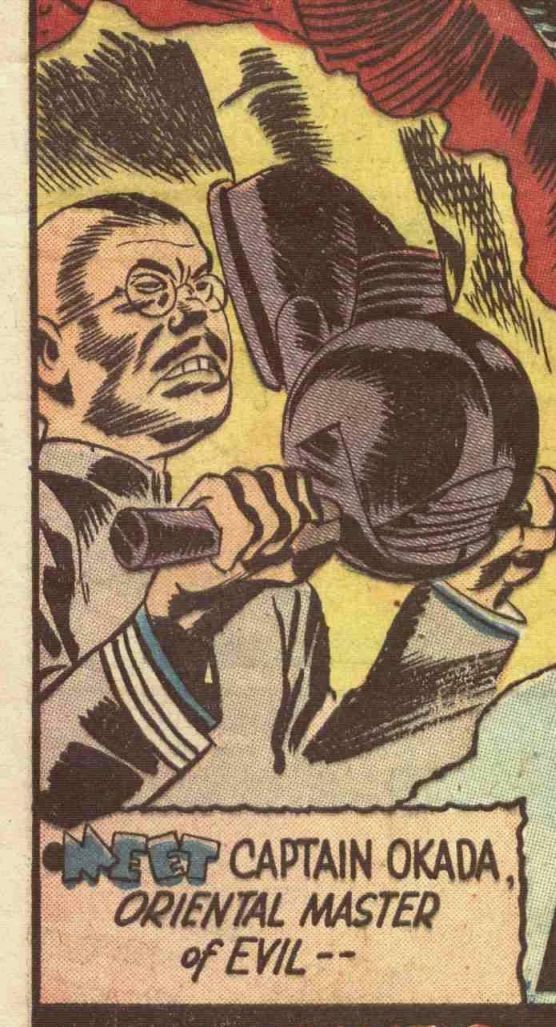
There is no war with people who fight for specific reasons, there are people who are “evil.” End of story. There is nothing in between.
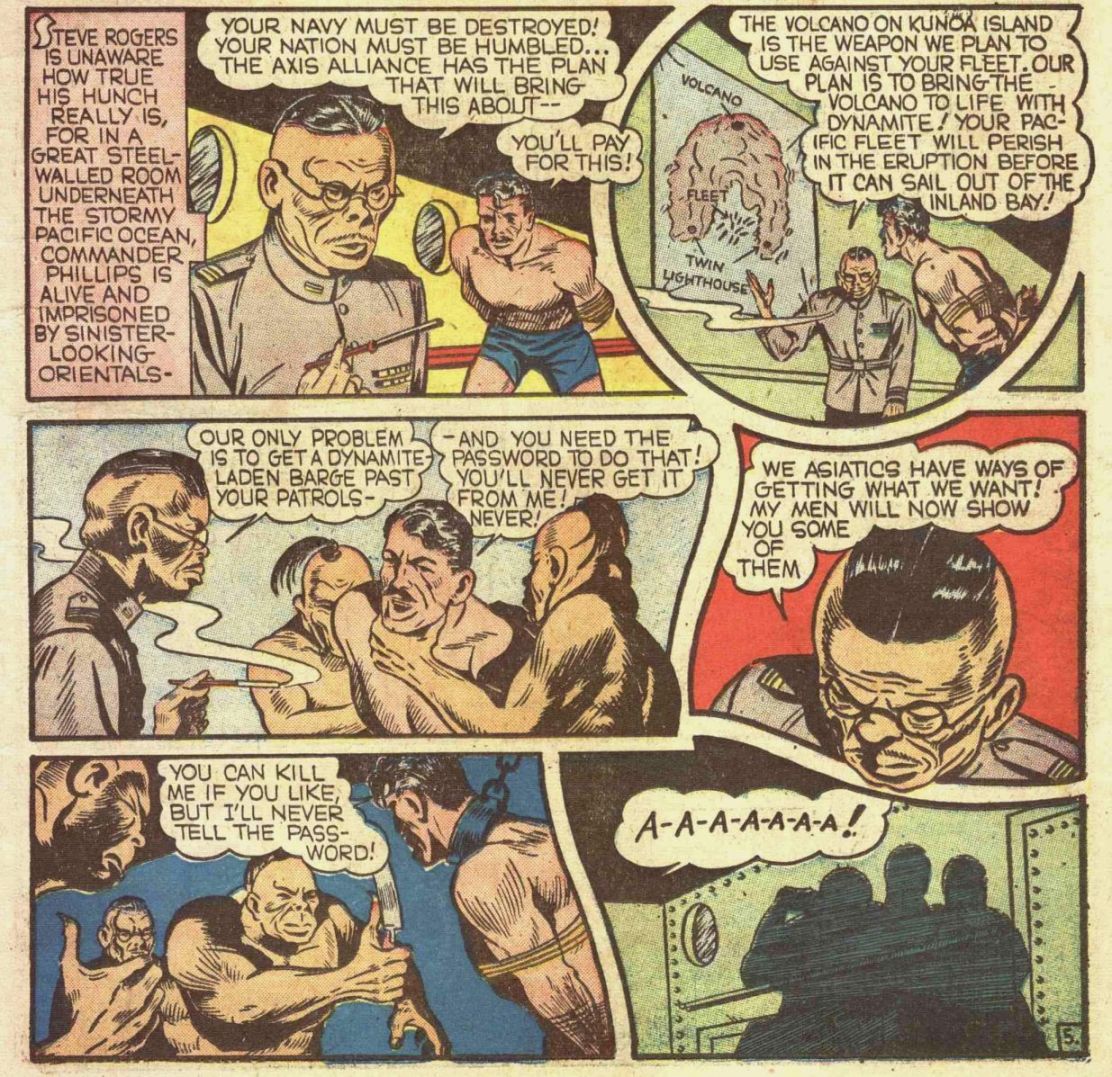
If all of this is not explicit enough for you, here we have it out in the open. “Sinister-looking Orientals”, “We Asiatics have ways of getting what we want.” “Asiatics” is fantastic because you have to wonder why they didn’t just say “Japanese”, when he clearly is from Japan. It’d still be racist but at least it wouldn’t imply that a whole continent enjoys torture.
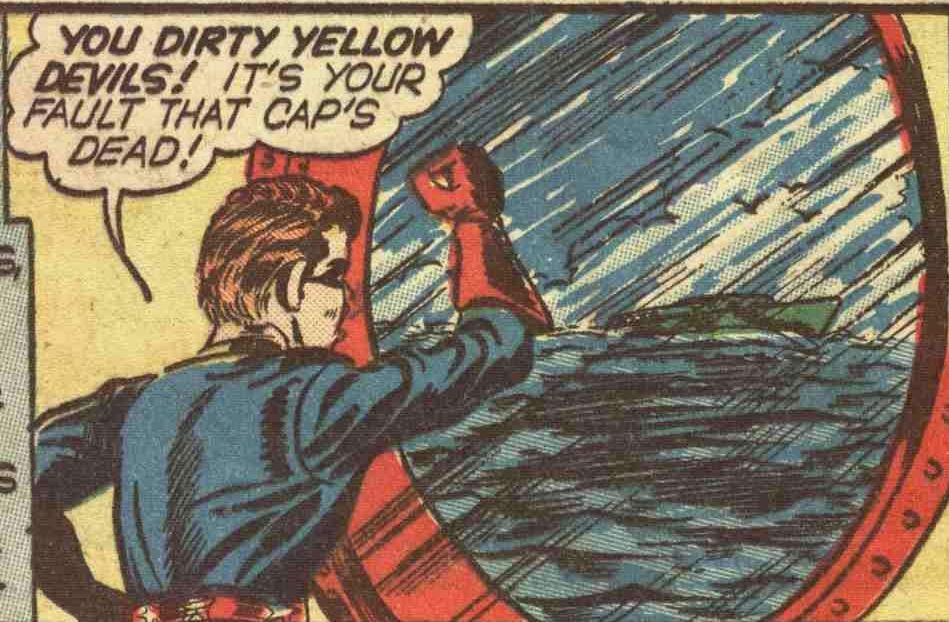
Yes, you could still say “dirty yellow devils” back then. Poor Bucky (now known as The Winter Soldier)!
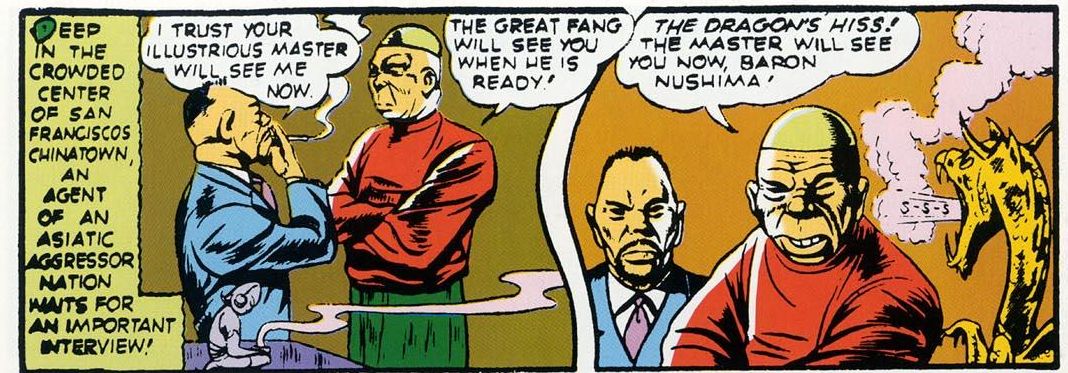
Again, it’s fascinating that although the racism is so blatant, it is also so generalized. “Asiatic Aggressor Nation” could mean anything from Thailand to Afghanistan to India, when it clearly plays on Japan.
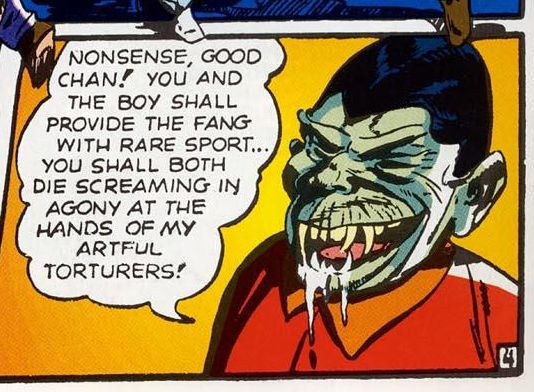
Or why not just draw them as monsters with gigantic teeth, blue skin (that’s weird for yellow devils) and watering mouths at the thought of torture? This is all fair game, right?
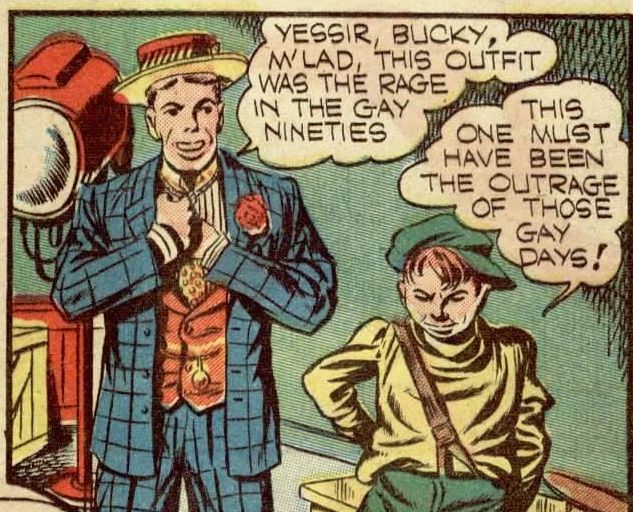
Not much cracks me up as Captain America and Bucky talking about the “gay nineties.” It’s so surreal to see them laughing about a time period that seemed weird to them and we know look at the forties in a similar way. At least “gay” was a somewhat innocent word back then.
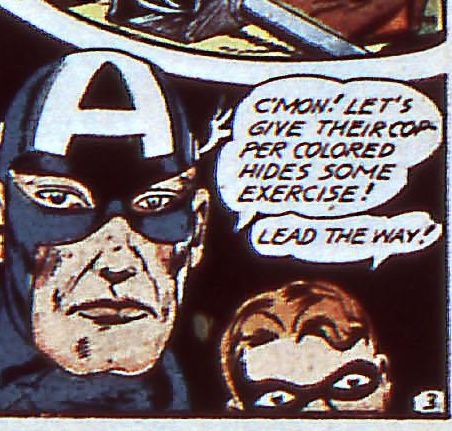
Now, there is a story in Captain America Comics #14 from May 1942 in which the Americans are attacked by evil Native Americans. It later turns out that they aren’t really Native Americans but Japanese masked as them. There is even a real Native American tribe which helps Cap to fight them. But all of this doesn’t stop Captain America from saying something like “Let’s give their copper-colored hides some exercise" (which translates to "redskins" nowadays). Playing with the image of Native Americans as evil savages just makes them look like evil savages, even if they later turn out to be something else. The stereotype sticks exactly because this is what we (or them back then) expected them to be.
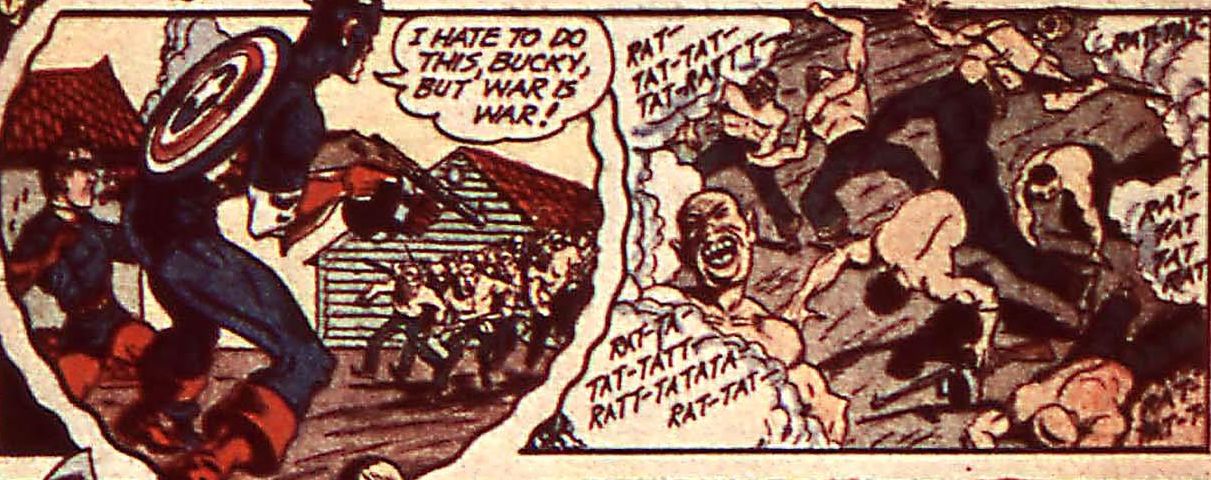
People and often newer comics forget that Steve Rogers killed probably thousands of people in WWII. The juxtaposition here between him expressing something like regret and justifying the slaughter that is seen in the next panel is disturbing.
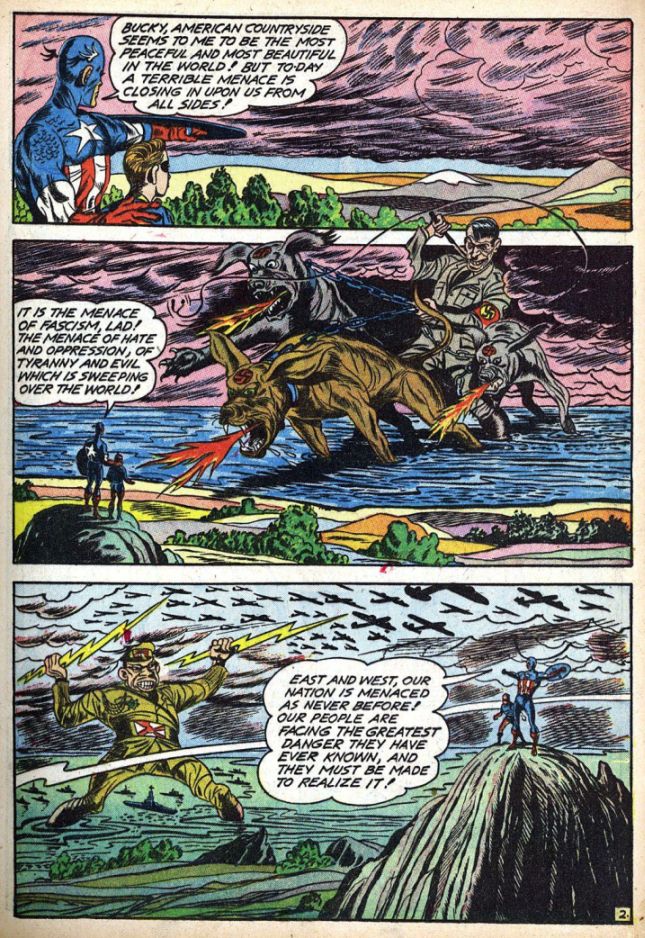
And finally a page that sums up everything about the oversimplification of the times. “Peaceful and beautiful American countryside” vs. “hate, oppression, tyranny”. “Our people […] must be made to realize it.” Cap says in the end, meaning, they must learn that we are good and they are evil and there is no reason for it, so no one needs to think about anything and just feel scared. Because nothing works as well as fear if you want to make people do what you want them to do. It worked during WWII, it worked during McCarthyism, it worked after 9/11 and it works in school every day. Or am I oversimplifying now?
